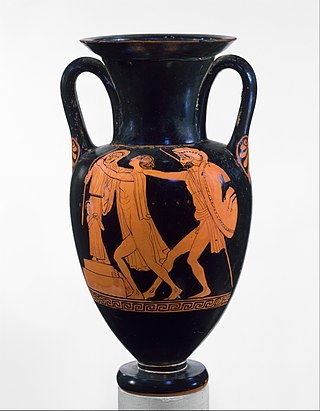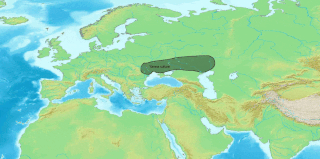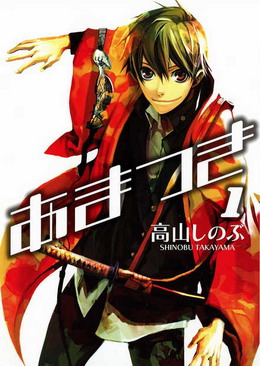Plot summary
The story is about the young Sosi. Sosi has a curse, that makes him half-snake. At each full moon, he is able to "shed his skin" and adopt the look of anyone he wants. When his brother, Theron, is injured, Sosi uses his curse to take his place in the Olympic games so that Theron won't be disqualified. Although his brother Theron is nasty to him, Sosi wants to find out about his curse at Olympia, and redeem himself in his family's eyes.
However, Sosi uncovers a terrorist plot at the Games. Boys competing in the Games, the favourites to win (including Theron), are all being targeted by the mysterious Warriors of Ahriman. Sosi soon discovers that the Warriors are targeting those that are sent dreams by the goddess of victory, Nike, who has manifested herself in the form of a priestess to oversee the Games.
When the priestess reveals herself, it is up to Sosi and his friends to make sure that the ones who she sent victory dreams win their events. However, when three out of the four she picked lose, she becomes extremely weak. The Warrior of Ahriman reveals his plan to sacrifice Nike to arise an army from the dead, Sosi has to embrace his curse. He turns into a snake, and calls Zeus to bring his thunderbolt down on the Warrior, just like his past incarnation, Sosipolis, did 36 years ago.
When the Warrior is defeated, fears arise that Soksi will go to the same fate as Sosipolis and be unable to change back from a snake. However, when Theron admits to everyone how much he loves his little brother (when Sosi's own mother cannot bring herself to) Sosi transforms back into his human self.

Cassandra or Kassandra in Greek mythology was a Trojan priestess dedicated to the god Apollo and fated by him to utter true prophecies but never to be believed. In modern usage her name is employed as a rhetorical device to indicate a person whose accurate prophecies, generally of impending disaster, are not believed.

Iranian mythology, or Persian mythology in western term, is the body of the myths originally told by ancient Persians and other Iranian peoples and a genre of ancient Persian folklore. These stories concern the origin and nature of the world, the lives and activities of deities, heroes, and mythological creatures, and the origins and significance of the ancient Persians' own cult and ritual practices. Modern scholars study the myths to shed light on the religious and political institutions of not only Iran but of the Persosphere, which includes regions of West Asia, Central Asia, South Asia, and Transcaucasia where the culture of Iran has had significant influence. Historically, these were regions long ruled by dynasties of various Iranian empires, that incorporated considerable aspects of Persian culture through extensive contact with them, or where sufficient Iranian peoples settled to still maintain communities who patronize their respective cultures. It roughly corresponds to the Iranian Plateau and its bordering plains.

Zahhāk or Zahāk, also known as Zahhak the Snake Shoulder, is an evil figure in Persian mythology, evident in ancient Persian folklore as Azhi Dahāka, the name by which he also appears in the texts of the Avesta. In Middle Persian he is called Dahāg or Bēvar Asp the latter meaning "he who has 10,000 horses". In Zoroastrianism, Zahhak is considered the son of Ahriman, the foe of Ahura Mazda. In the Shāhnāmeh of Ferdowsi, Zahhāk is the son of a ruler named Merdās.

Onimusha: Dawn of Dreams, released in Japan as Shin Onimusha: Dawn of Dreams, is an action-adventure hack and slash video game developed and published by Capcom for the PlayStation 2. It is the sixth and final installment of Capcom's Onimusha series, while being the fourth and final game in the canonical main series. It was released in Japan in January 2006, followed by North American and European releases in March. The plot is set in medieval Japan decades after the events of Onimusha 3: Demon Siege and focuses on Soki, a warrior who possesses Oni powers. Soki is on a quest to stop Hideyoshi Toyotomi, who has unified Japan in league with his demonic army of Genma after the death of Nobunaga by the hands of Samanosuke, and he also joins forces with several allies who all share the same goal in stopping the demons and Hideyoshi plans of wanting to conquer the world.

Magical Circle Guru Guru is a Japanese manga by Hiroyuki Etō, which was serialized in Enix's Monthly Shōnen Gangan from 1992 to 2003. It was later adapted into an anime series on October 13, 1994. A second manga series was serialized in Gangan Online in 2012.

Blood Will Tell: Tezuka Osamu's Dororo, released as Dororo (どろろ) in Japan, is a 2004 PlayStation 2 game released by Sega. It is based on the Japanese manga series Dororo, which was created by Osamu Tezuka. It concerns a hero named Hyakkimaru, who has had much of his body stolen by forty-eight fiends, and has prosthetic replacements. Along with his ally, the thief Dororo, Hyakkimaru must defeat all forty-eight fiends.

Aveyond is a role-playing video game series by Aveyond Studios. It is set in a fantasy medieval world in which players attempt to save the world from evil beings, with a number of side quests available. There are eight games thus far in the series: the first two full games, the four "chapter" releases of the third game, the full fourth game, and the free prequel, Ahriman's Prophecy. All the games in the series were made with RPG Maker XP; Amaranth Games was the first developer to popularize RPG Maker as a commercial tool in 2006. Several of the games were subsequently released for Linux and Mac, along with Windows.

Calabash Brothers or Hulu Brothers is a Chinese animation TV series produced by Shanghai Animation Film Studio and directed by Hu Jinqing, Ge Guiyun, and Zhou Keqin. It was extremely popular when it aired on TV in 1986–1987.

Shining Tears X Wind is a Japanese anime based on the PlayStation 2 games Shining Tears and Shining Wind. Shining Tears X Wind presents an adapted version of Shining Wind's story, seen from the perspective of the character Souma. It is directed by Hiroshi Watanabe and produced by Studio Deen. The series started airing in Japan on April 6, 2007 and finished airing on June 29, 2007. The anime has the same opening and ending themes as the game Shining Tears. A sequel to this is a mobile game entitled Shining Wind X, which was released in January 2008.

In Greek mythology and ancient religion, Nike is the goddess who personifies victory in any field including art, music, war, and athletics. She is often portrayed in Greek art as "Winged Victory" in the motion of flight; however, she can also appear without wings as "Wingless Victory" when she is being portrayed as an attribute of another deity such as Athena.

Amatsuki (あまつき) is a manga series by Shinobu Takayama, serialized in Monthly Comic Zero Sum. A 13 episode anime adaptation produced by Studio Deen premiered on April 4, 2008.
Shuimu, or Shuimu Niangniang, is a water demon, spirit or witch of Buddhist and Taoist origin in Chinese mythology. She is also identified with the youngest sister of the transcendent White Elephant. According to Chinese folklore, she is responsible for submerging Sizhou under the waters of Hongze Lake in 1574 A.D. and is currently sealed at the foot of a mountain in Xuyi District. However, different tales of Shuimu exist in different regions of China. For example, in Suzhou, Anhui she may be a demon goddess, while in Taiyuan, Shanxi it is believed that she was a woman who was gifted a magical whip by an old man. In Mandarin, the word "Shui" means 'water', "mu" is 'mother', and "niangniang" may mean a goddess. Shuimu is also referred to as The Old Mother of Waters, Fountain Goddess, and Sea Goddess.
In ancient Greek religion and Greek mythology Sosipolis was a native god at Elis. His mother was the goddess Eileithyia. There was a sanctuary of him inside the sanctuary of Eileithyia at Olympia, Greece. There was also a shrine dedicated to him on the left of the sanctuary of Tyche in Elis.











